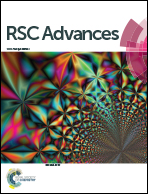A novel route towards well-dispersed short nanofibers and nanoparticles via electrospinning†
Abstract
Good control of the size, shape, and dispersion is of great significance for the preparation and application of nanomaterials. In this paper, we report a novel electrospinning–calcination–grinding route to prepare well-dispersed inorganic nanoparticles and short nanofibers. Continuous inorganic nanofibers are prepared by calcining the electrospun precursor nanofibers, which are then transformed into nanoparticles or short nanofibers after mild grinding. Due to the continuous fiber shape of the precursor agglomeration is avoided during calcination, and due to the fragile nature the calcined continuous inorganic nanofibers can be made into nanoparticles or short nanofibers easily by short-time mild grinding. On account of the versatility of electrospinning, the present route is applicable to most of the commonly seen materials. Furthermore, short nanofibers which are difficult to prepare for some materials by other conventional methods can be easily obtained by this method. A series of inorganic nanoparticles and short nanofibers have been prepared, including WC, TiC, ATO, W, Ni, and Cu. The prepared suspensions of WC, TiC, and W show outstanding dispersion stability and no sedimentation or flocculation is observed even after several months, indicating high promise for many applications such as printed electronics and three-dimensional (3D) printing.


 Please wait while we load your content...
Please wait while we load your content...